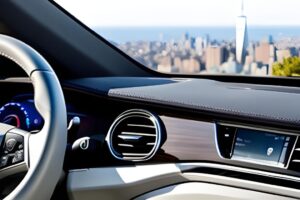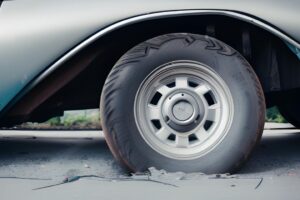The future is now.
Yes, that is indeed a cliche statement but it’s the truth now. We are seeing a revolution in car technology unlike we have ever experienced. It’s an amazing time to be alive and look at cars literally being turned into computers. The funny thing is, the modern philosophy about cars is that the human being behind the wheel is the least safe thing about cars. If you don’t believe this, take a look at all the best car manufacturers today. Jaguar, Mercedes and of course Tesla are all piling in truck loads of cash into the automation software for car technology. We are in the era of the driverless car. We thought that we would have flying cars by now but come on, that’s too much of a stretch. Instead we have cars that are using satellite technology to drive themselves or rather you, to the destination. So this allows the one question on everybody’s lips to be the only thing you should care about. Is modern car technology really safe?
How fast is fast?
Autonomous cars are quite terrifying when you first experience them. It’s like you’re on a rollercoaster in that you are strapped into a moving object to which you don’t really control. To that end, the number one thing you fear is speed control. Will the car obey the speed limit? Will it overtake another car safely in that, can it speed up when the time is right and slow down when the time is right also? All these things are or should be your mind if you plan on buying a car like a Tesla Model 3. But how fast is fast? Many autonomous cars are electric and thus they have brutal acceleration. If the speed limit is 50mph, what if your car gets to that speed in under 2 seconds? That’s not going to make for a comfortable ride.
The acceleration mapping of the autonomous cars is somewhat of a hot subject. The early computers in cars don’t really have a feather touch. The go up and down in speed and don’t regularly maintain one core speed. Speed limit control is also a hot topic because you want your autonomous car to obey the law so you don’t get penalized for a computer’s actions. However the things that could affect this control are weather conditions, digital road mapping i.e. speed limits for individual roads being registered into a system for the car to reference, potholes, spills in the roads such as oil or gravel and things like tire tread all matter. At the moment this technology is still being worked on and thus not totally safe. Would you risk it?
Accuracy in steering
Think about how amazing our minds and bodies are when we drive cars. We can look out in the road while we’re driving and judge distances in a heartbeat. We can figure out in our minds how far the car is in front of us and if we needed to, how far and long it would take to brake and slow down as to avoid a rear-end collision with it. We can drive down a road and look all the way to the end and still see a pothole we’re about to run over in our peripheral vision and make a sudden but accurate adjustment of the steering wheel to avoid it. We take all these things for granted even though they are beautiful complex.
This brings up the question, just how accurate is modern car technology when it comes to steering accuracy? For this you really need to take a good hard look at LIDAR. An acronym for light detection and ranging, this technology literally maps out the roads and spaces that the car can follow and drive into. LIDAR isn’t just part of the car’s technology but also using aircraft to keep new areas updated so autonomous vehicles can make their way through newly built up parts of a city. However, this all translates back into the car’s computer who will be steering the car using this information. So far the accuracy does leave something to be desired but the way autonomous cars follow the roads is quite impressive. You may feel as if the car is jerking around a little around corners but it’s very uncommon for an autonomous car to veer into another lane.
Humans vs machines
Inevitably, someone needs to make the case of humans versus machines. That’s what it really boils down to now because we’re building cars that are going to drive for us. However even these cars will have to contest with other human drivers. This brings up the question, if your autonomous car is safe but a human-driven can is not, then do regular rules around car accidents apply? If you are hurt by a negligible driver even when you are in the driver’s seat not driving the car, then the same rules do apply.

Contact experienced car accident attorneys who know their way around this part of the law if you are injured by another driver. They will make a case that will show the accident and consequently the injuries you have sustained to be the other car’s fault. Even if you are in an autonomous car, this can be done by using the computer data and satellite positioning of the car at the time of the incident. In fact, it’s even better this way because rather than he said she said, you have factual data of the car’s movements and speed thanks to the autonomous computer capability of the car. In this respect it’s a lot more secure and legally safer for innocent drivers.
Modern car technology is breathtaking when you understand just how complex the things we now take for granted are. However the computers right now are not able to hold a consistent speed all the time. Sometimes you might be going slower or faster than the speed limit but the adjustments are made reasonably quickly. Regarding steering accuracy, this is one of the better points of safety technology as LIDAR helps the computers to place the care in the exact position desired.
–
Thanks for reading, y’all stay dandy. 😎 Don’t forget to follow me on Instagram!
-Diego


